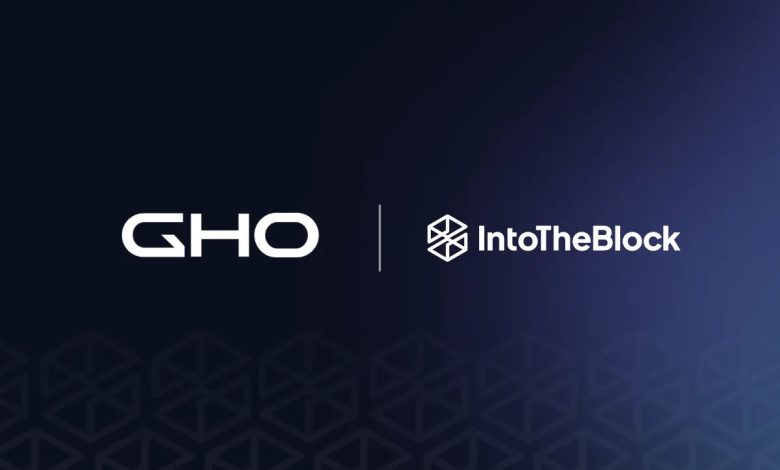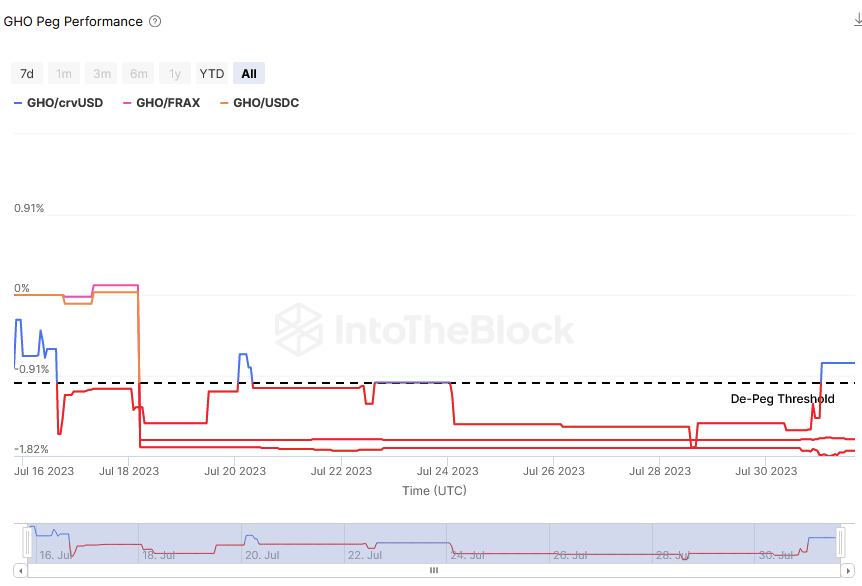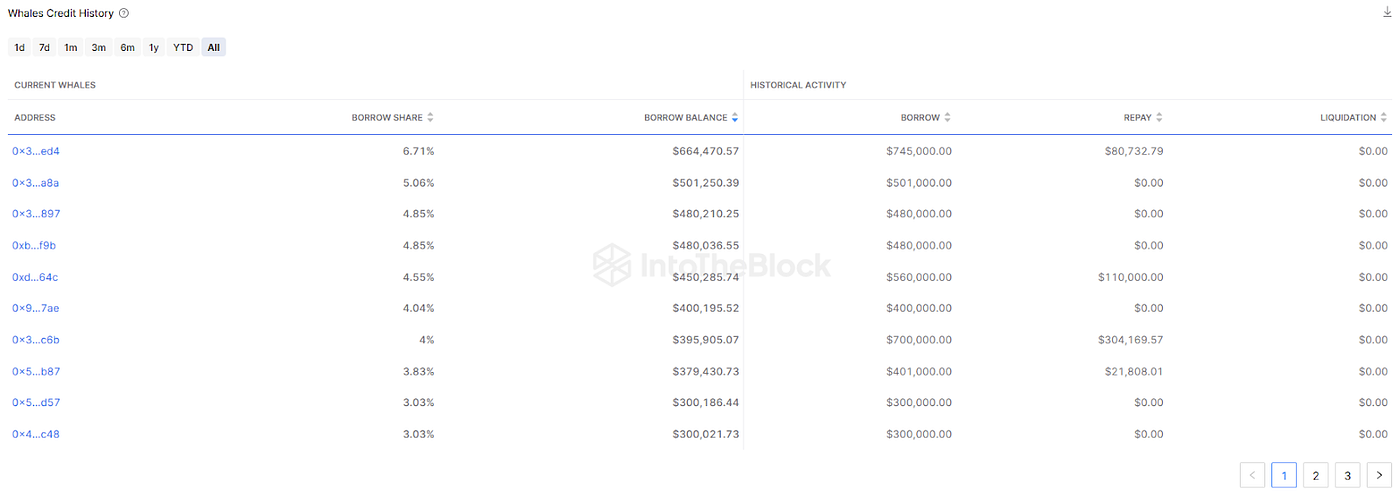IntoTheBlock’s Risk Radar Dashboard
IntoTheBlock launches economic risk tools for Aave’s GHO stablecoin on the DeFi Risk Radar.

With the recent launch of GHO on the Aave v3, we’re happy to announce the release of the GHO Risk analytics in the alpha version of the DeFi Risk Radar.
IntoTheBlock Risk Radar Expands to Stablecoins
A cornerstone to the decentralized finance (DeFi) ecosystem, stablecoins are a crucial tool to help users manage risk and returns in their strategies. However, economic risks such as de-pegging events and liquidations can cause substantial setbacks to a DeFi user’s strategy if not carefully monitored.
IntoTheBlock’s (ITB) newly released Risk Radar Dashboard for the highly anticipated GHO stablecoin is our first step in bringing advanced monitoring for economic risks related to stablecoins. The risk indicators in the dashboard are derived from the metrics used in our quant strategies that manage capital for many of the largest institutions and treasuries in the DeFi ecosystem. For more info on the Risk Radar vision feel free to read our CEO’s announcement of the initial alpha release.
GHO Risk Indicator Overview
Aave is one of the most well-known protocols in DeFi and the largest lending platform in the space with over $7 billion in TVL across 8 different blockchains. Aave’s design is to facilitate a permissionless method for users to lend and borrow assets through overcollateralized loans. As one of the most battle tested protocols in the space, the protocol decided to launch a collateralized debt position (CDP) stablecoin, GHO, as a new product for users.
Stablecoins can be notoriously difficult to manage as the crypto space has seen in the past with major de-pegging events and the infamous crash of Terra’s UST. These larger events are in addition to the daily economic risks a user can face such as liquidations of loans in lending markets or high slippage fees when attempting to withdraw assets from a liquidity pool on a decentralized exchange (DEX)
The 20 new metrics released in the GHO Risk Radar aim to provide a transparent way for users to navigate the risks that can be associated with stablecoins and help users make informed decisions about their strategies. Below, we will highlight a few of the indicators in the GHO Risk Radar release and how they can be used to navigate the market.
GHO Peg Performance
A key indicator to monitor for stablecoins is its ability to keep its peg. The GHO Peg Performance indicator tracks GHO peg performance against other stablecoins in a liquidity pool.  Above we can see that GHO has struggled slightly to keep the peg with other stablecoins such as crvUSD, FRAX, and USDC. This is often the case for a newly launched stablecoin as it expands its total supply and liquidity begins to deepen in the liquidity pools.
Above we can see that GHO has struggled slightly to keep the peg with other stablecoins such as crvUSD, FRAX, and USDC. This is often the case for a newly launched stablecoin as it expands its total supply and liquidity begins to deepen in the liquidity pools.
IntoTheBlock DeFi Risk Radar users will be able to monitor potential de-pegging events in near real-time, download the data to analyze previous instances and soon be able to receive alerts to be notified as they happen.
Collateral Distribution Behind Borrows
To monitor economic risks to GHO from a global perspective, users can use the Collateral Distribution Behind Borrows metric. The chart highlights the types and amounts of collateral used over time to mint GHO.
As can be seen in the chart, The most used collateral to mint GHO is wstETH with the second asset being WETH. This means that users would want to pay attention if there was a sharp decrease in the price of ETH as it could result in a substantial reduction in the supply of GHO. As GHO minters repay debts or get liquidated, the supply of the stablecoin could shrink in liquidity pools which could cause high slippage for users wanting to exit.
Whales Credit History
The behavior of whales in a market can have a significant impact on other users and the protocol’s overall health. If there are whales in the market that are known to have risky behavior, this information can help other users model their own risk profiles in the market accordingly.
The Whales Credit History indicator helps users identify GHO whales and understand how they have behaved in the past through their borrow, repayment, and liquidation history. Users can explore the whale address further by clicking the hyperlink that will take them to the etherscan page for that address.
From the current snapshot of GHO whales, we can see that the borrow share is well distributed with known addresses having minted more than 10% of the total GHO supply. Furthermore, we can see that no liquidations have happened on these addresses in the past, but some repayment. This can indicate that the current whales in the market are actively managing their risks.
Discover the GHO Risk Radar and Join the Conversation on Stablecoins
The launch of the GHO Risk Radar by IntoTheBlock represents a significant advancement in the monitoring and management of economic risks associated with stablecoins. With the inclusion of 20 comprehensive indicators, users can now navigate the DeFi space with a more informed and confident strategy.

